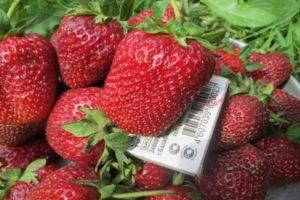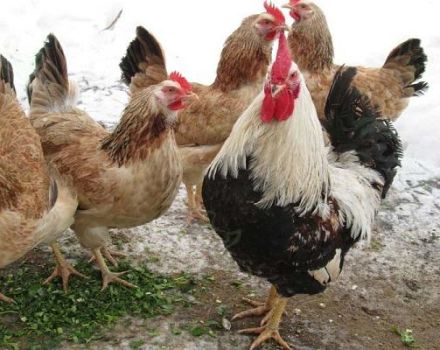Description and characteristics of the strawberry variety Festival chamomile, cultivation and reproduction
Breeders regularly discover new varieties of strawberries. Among the wide variety, the festival chamomile variety has gained popularity. The variety is adapted for growing in the climatic conditions of many regions of the country.
Characteristics and description of strawberry Festival chamomile
Strawberry Festival chamomile bred as a result of selection experiments conducted at the Ukrainian Agrarian Academy of Sciences. The variety has inherited the characteristics of Redcoat and Zarya varieties. Having planned the planting of strawberries, you should familiarize yourself with the characteristics of the variety.
Ripening terms and consumer qualities of berries
The variety belongs to the mid-season category and begins to bear its first berries in mid-June. Ripe fruits acquire a bright red color with a pronounced shine. The pulp is juicy, dense, with a sweet and sour aftertaste. The crop is suitable for universal use, including canning, processing, freezing for long-term storage, fresh consumption.
Yield
The yield index from one shrub reaches 0.5 kg. The weight of each berry varies between 35-45 g for the first fruiting and up to 20 g for further growth. The berries have an irregular oval shape, with a slight flattening on the sides. Deep grooves often appear on the surface of the skin.
Stability and agronomic features
The Festival chamomile variety is prized for its high resistance to gray mold and white spot formation. Also, strawberries are resistant to cold weather. In rare cases, the fruit is affected by a tick, therefore, preventive treatment of plantations is a mandatory agricultural technique.
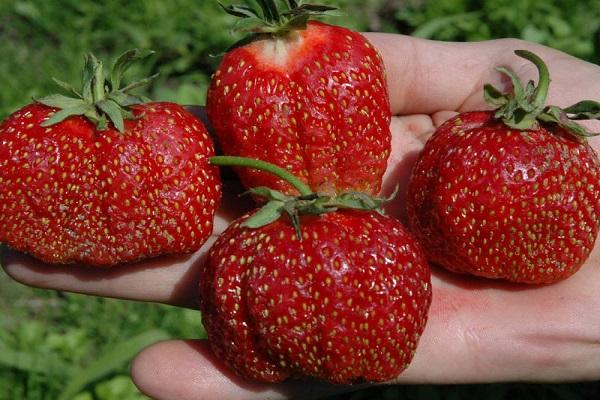
Advantages and disadvantages of the variety
According to the description of the strawberry variety Festivalnaya chamomile, a number of positive qualities can be distinguished. Their list includes the following:
- stable fruiting;
- high taste characteristics;
- preservation of marketable appearance during long-term transportation;
- large fruit size;
- unpretentious care;
- resistance to negative external influences.
A disadvantage that gardeners often face is the poor tolerance of heat and arid climate.Also, the disadvantage is the tendency to contract some infections.
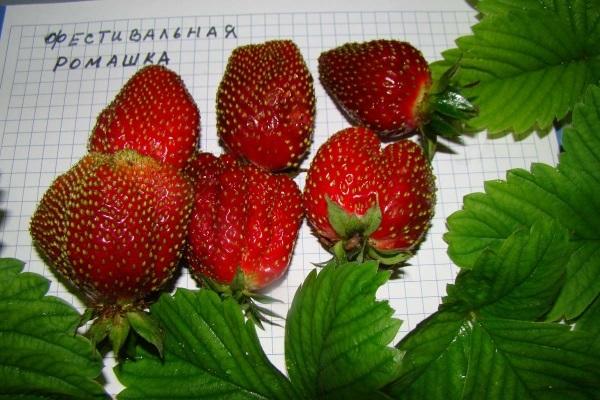
Festival Strawberry Cultivation Technique
When planting strawberries Festival chamomile, you must adhere to proven technology in order to avoid mistakes and get a large harvest in the future. It is important to correctly determine the timing of sowing, treat the soil in advance, prepare the seedlings and follow the step-by-step instructions for planting.
When is it better to plant
Planting work when transferring seedlings to open soil is recommended in spring, when there is no risk of recurrent frosts. It is allowed to plant at the beginning of autumn, but you will need to use a covering material so that the seedlings have time to adapt to new conditions, take root well and do not freeze from the cold.
Preparing the soil
Choosing a suitable place to place seedlings, you should give preference to sandy loam or loamy soil. The area should be well lit, but protected from direct exposure to ultraviolet rays. The development of seedlings is negatively affected by blowing through and the presence of groundwater at a depth of more than 80 cm.To prevent the spread of harmful insects from previous crops, it is recommended to grow strawberries in places where legumes, parsley, dill or carrots used to grow.
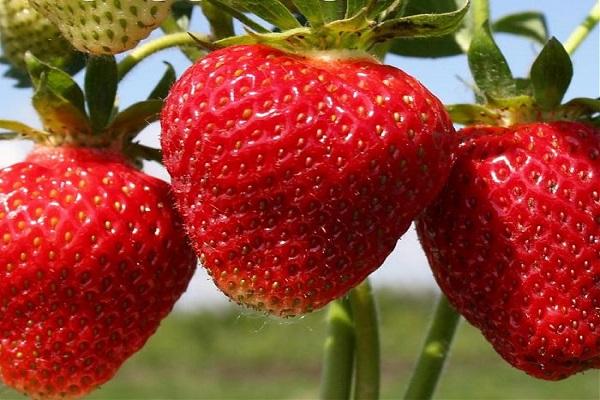
For active growth and development of seedlings, six months before planting, the soil is dug to a depth of 25-30 cm, cleaned of weeds and top dressing is applied. Rotted manure or peat, superphosphate, potash fertilizers should be used as fertilizers.
Preparation of seedlings
Before planting the plants, the roots are kept in a special solution for 1.5-2 hours. The optimal solution for strawberries Festival chamomile is a growth biostimulator. It is enough to purchase a suitable stimulant, dilute it in warm water and soak the roots of strawberry seedlings. Before transferring the treated seedlings to the ground, the base of the roots is slightly pruned.
Planting process
The first step in sowing strawberries is to dig out the planting holes. The distance between the pits should be at least 30 cm, the depth - 35-45 cm. The dug holes are abundantly moistened with water, the seedlings are placed in them and the roots are gently straightened at the bottom. The root collar must remain at ground level. Having sprinkled the seedlings with earth, the ground part of the bushes is pinched, leaving 3-4 of the most powerful shoots.
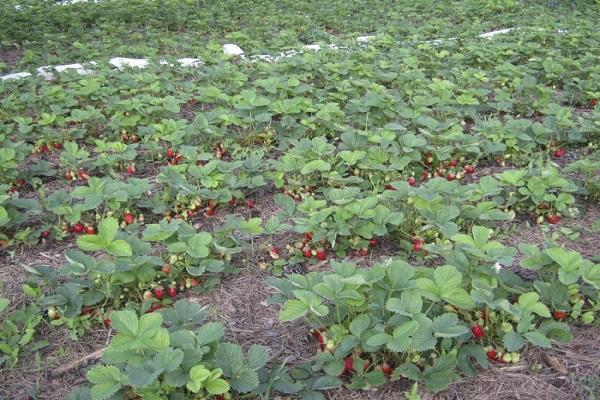
Nuances of culture care
After planting the plants, it is necessary to provide constant care in order to get a large harvest. The Festival chamomile variety requires watering, top dressing, soil treatment and mulch coverage.
Watering, weeding and loosening
The first watering is performed immediately after transplanting. In the future, the plantings are watered once every 2 weeks at a moderate temperature and every 2-3 days in a hot climate. 10-12 liters of liquid are used per square of earth. Before watering strawberries, you should check the condition of the soil by squeezing a lump of earth in the palm of your hand - if it crumbles, then abundant moisture is required.
Each watering is accompanied by loosening and weeding of the earth. Loosening ensures the passage of moisture to the base of the roots and prevents the development of rot. Weeding is necessary to remove plant debris and weeds.
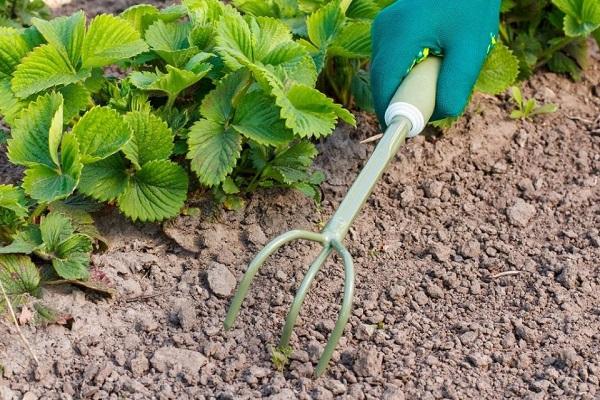
Fertilization
Feeding for strawberries Festival chamomile is applied several times during the season. The purpose of primary fertilization is to make up for the nitrogen deficiency to stimulate growth. The next dressing is done in mid-spring to increase the number of ovaries and improve the taste. In the second and subsequent times, organic or complex fertilizers can be applied to the soil.
Final dressing is applied during the period of ovary formation and after harvesting to restore the strength of the plants.
Mulching
The area around the strawberry bushes should be covered with a layer of mulch. Coniferous branches, straw, sawdust are suitable as material. Mulching keeps moisture in the soil longer and prevents the development of infections.
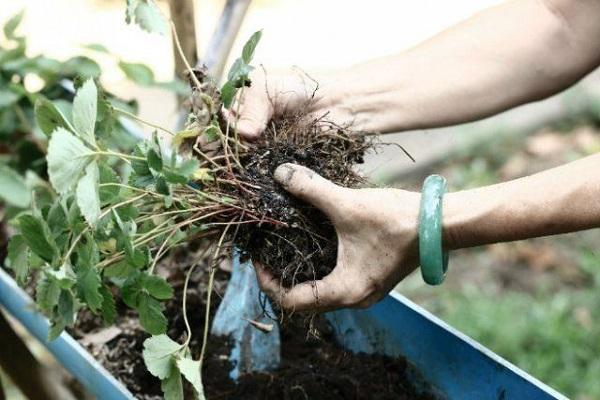
Diseases and pests
Despite the good resistance to external influences, in an unfavorable climate there is a risk of damage to strawberries. For preventive purposes, plantings should be treated with insecticidal and fungicidal preparations.
Breeding types
You can increase the amount of berry culture on the site by reproduction. Experienced gardeners propagate Festival chamomile strawberries with seeds and mustaches. Each of the methods has its own distinctive features and advantages, so when choosing the appropriate option, you should familiarize yourself with all the nuances.

Seeds
To prepare the seeds, you need to pick the berry and let it ripen. Then you should remove the top layer from the fruit and carefully remove the seeds from the skin. If the seeds do not crumble, you need to wrap the skin in a cloth and gently rub the rest of the pulp. The seed is thoroughly washed in water and dried naturally. The prepared seeds are left for storage, stratified and sown in early spring.
Mustache
When breeding with a mustache, you first need to prepare the soil and spread peat or sawdust on the surface as fertilizer. The strawberry antennae are tilted towards the ground and slightly deepened into the previously plowed ground. In the future, the deepened antennae are watered and looked after as a full-fledged seedling.
Cleaning and storing strawberries
Ripe strawberries Festival chamomile are carefully picked by hands together with the stalk. The harvested crop can be consumed fresh, processed or left for storage. So that the berry does not lose its density, it is necessary to decompose the crop in a small number of layers or pack it in plastic bags. To store berries for a long time, you need to keep the crop in the freezer. Frozen berries can be stored for several months without losing their original flavor characteristics.
